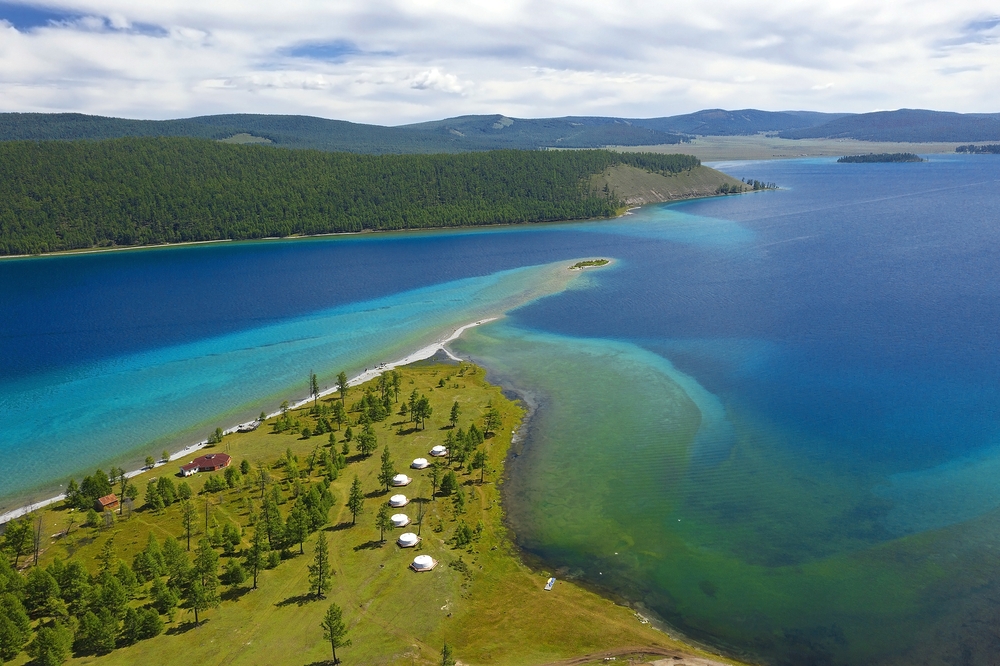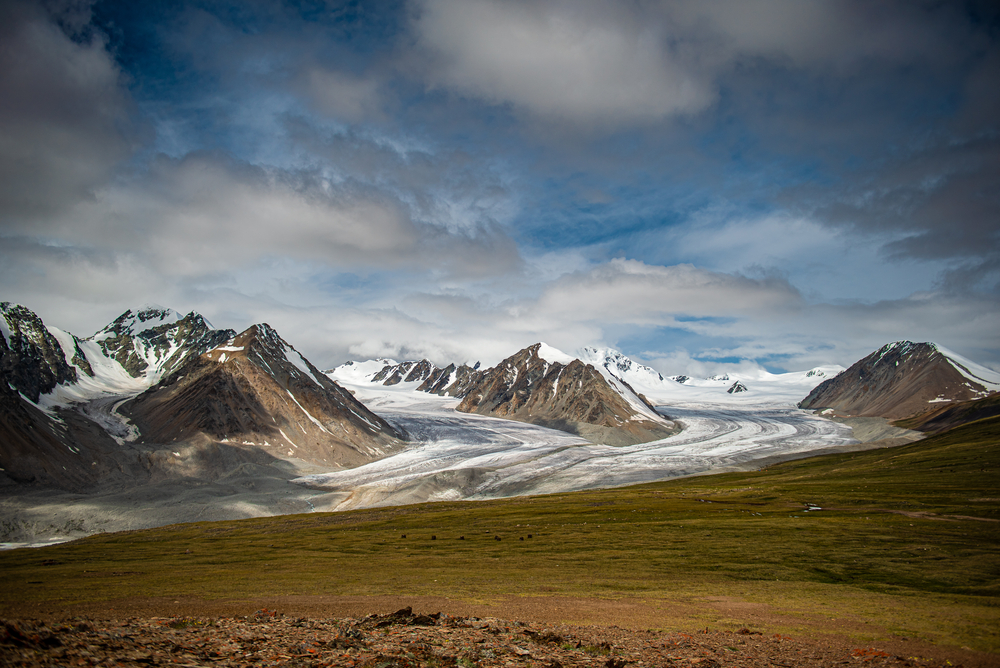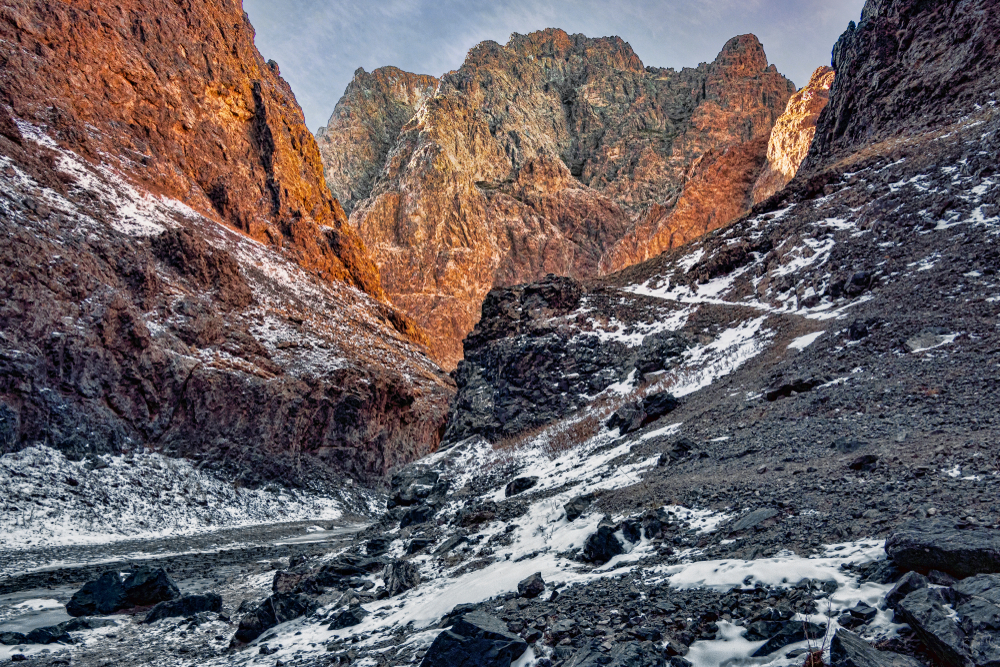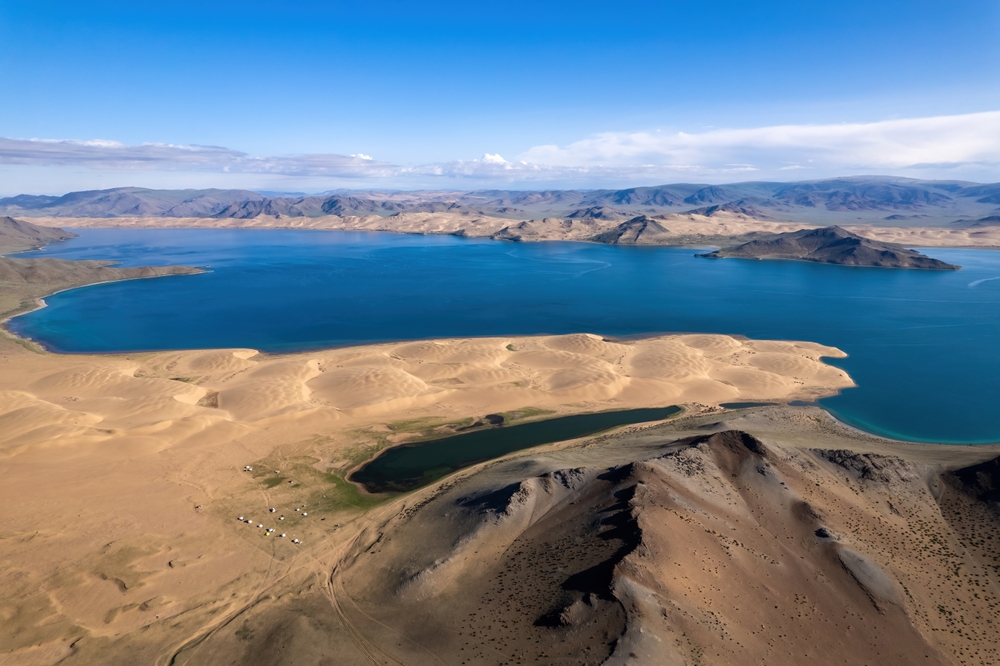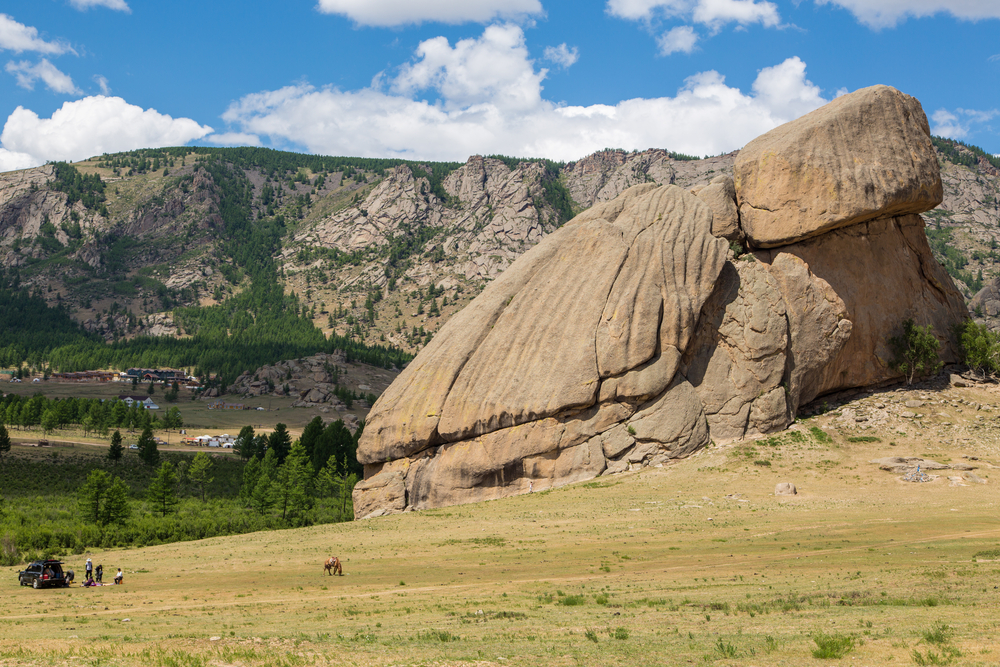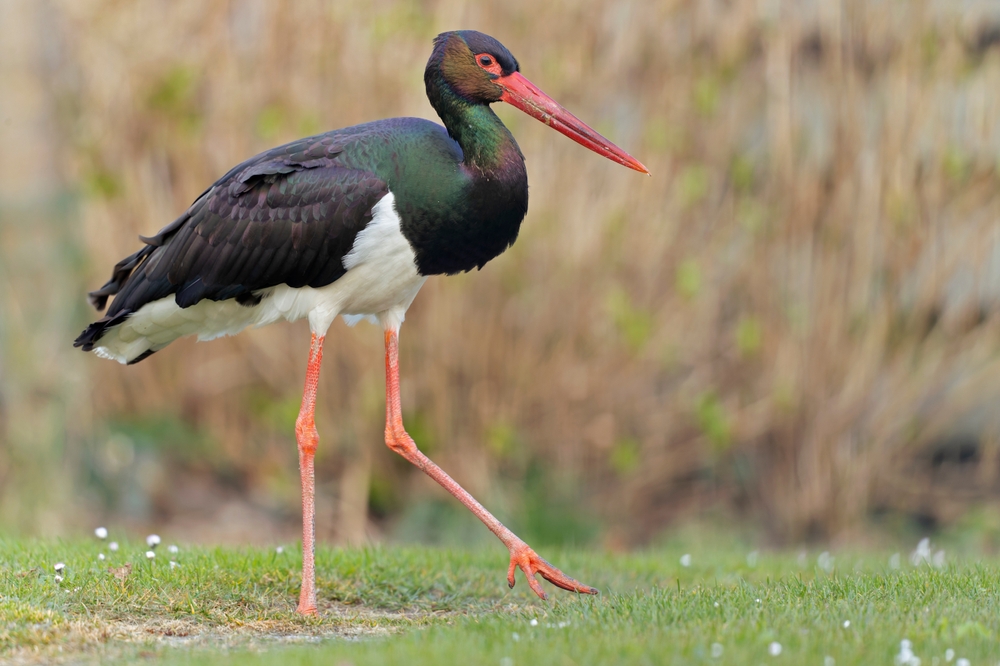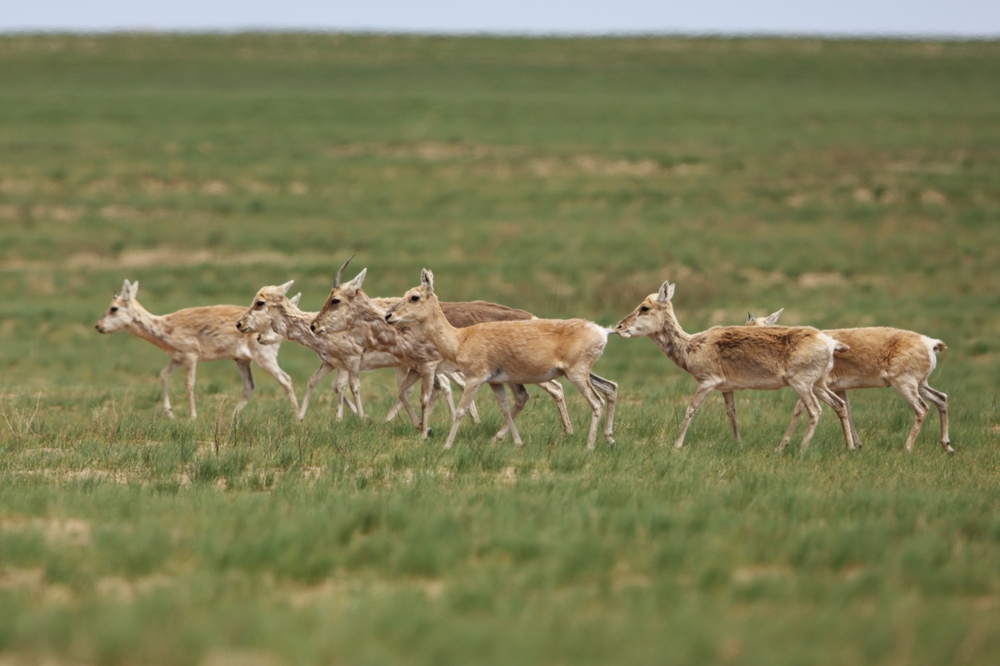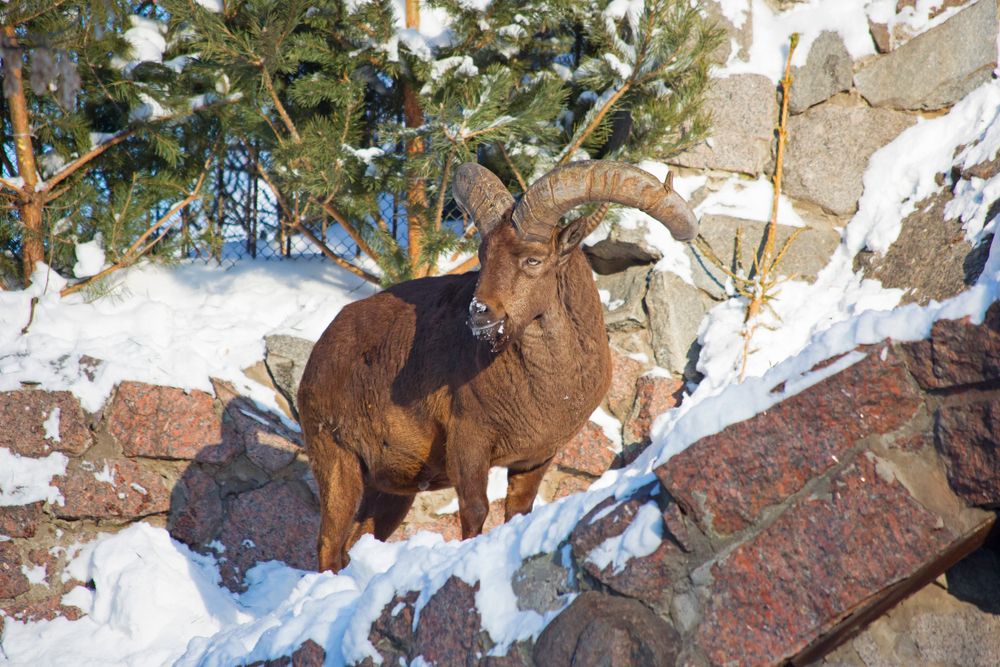Lake Khovsgol Overview
Lake Khovsgol National Park, locally known as Хөвсгөл нуурын үндэсний цэцэрлэгт хүрээлэн, is one of Mongolia’s most pristine and picturesque natural reserves. Covering an impressive 3,707 square miles (9,620 square kilometers), it is located in the northernmost region of Mongolia near the Russian border.
At its heart lies Lake Khovsgol, the “Blue Pearl of Mongolia,” the country’s second-largest freshwater lake and one of the most ancient lakes in the world, estimated to be over two million years old. The park’s location, nestled within the Khangai mountain range, places it in a diverse and dramatic landscape that boasts soaring peaks, verdant forests, and sweeping alpine meadows.
The terrain of Lake Khovsgol National Park is incredibly varied, with towering mountains like Burenkhaan (9,100 feet or 2,774 meters) creating a striking backdrop. The lake itself is a breathtaking centerpiece, stretching 85 miles (136 kilometers) in length and 17 miles (27 kilometers) in width, with depths plunging to 878 feet (268 meters).
The park’s landscapes are blanketed in dense Siberian larch forests, interspersed with birch groves and wide expanses of steppe, creating a haven for both plant and animal life. The clear, unpolluted waters of Lake Khovsgol teem with endemic fish species, while the surrounding environment features waterfalls, streams, and mineral springs, enhancing its ecological significance.
The park is home to an astonishing array of wildlife, making it a haven for nature enthusiasts. Among the mammals found here are ibex, argali sheep, Siberian roe deer, red foxes, and the elusive snow leopard. Birdlife is equally diverse, with over 200 species recorded, including majestic golden eagles, bearded vultures, and various types of cranes. The unique combination of ecosystems supports an intricate web of life that reflects the unspoiled wilderness of Mongolia.
Lake Khovsgol National Park is renowned for its cultural and natural features, attracting visitors worldwide. The lake’s pristine waters provide opportunities for kayaking, fishing, and boating, while the surrounding trails are perfect for hiking, horseback riding, and even winter sports during the colder months when the lake freezes over. Visitors also experience the traditional nomadic culture of Mongolia through interactions with local Tsaatan (reindeer herders) communities, adding a rich cultural dimension to the park.
The park faces conservation challenges, including the impact of tourism on its fragile ecosystems and the effects of climate change on the lake and its surroundings. However, concerted efforts by the Mongolian government and international conservation organizations have led to significant successes in protecting this ecological treasure. Strict management practices and community involvement have been pivotal in maintaining its biodiversity and natural beauty.








































































